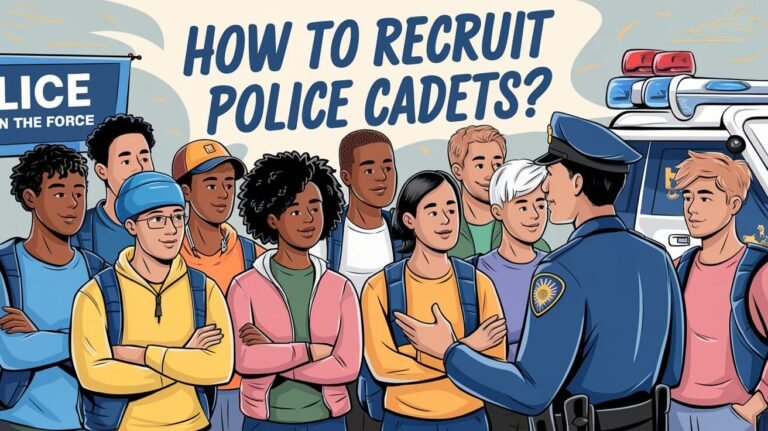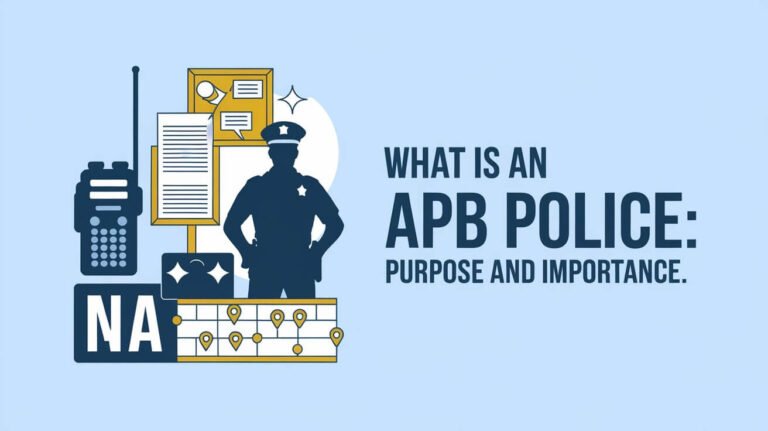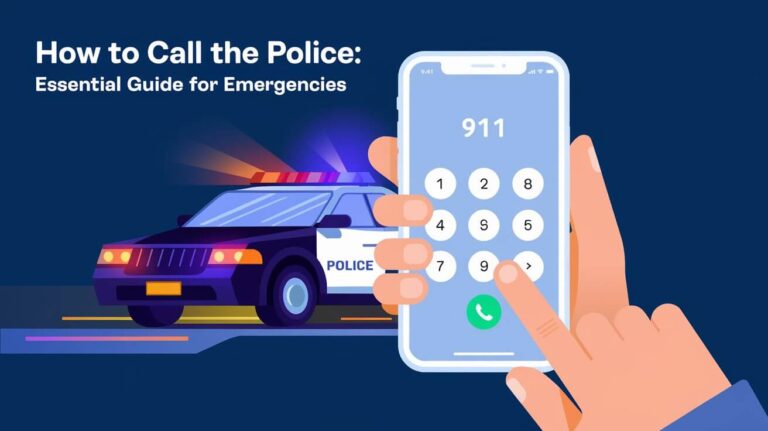Police Call Codes California: Complete List & Definitions

The California Highway Patrol (CHP) and other law enforcement in California use standardized police call codes. These codes, like 10-codes, help officers communicate well. They are key to keeping the public safe and making police work more efficient.
Police 10 codes are used a lot in California, with over 100 codes for different situations. They help officers share important info fast, like emergencies, accidents, and crimes. Using these codes, police can act quickly, making everyone safer.
Origins of California Police Radio Codes
The history of police radio codes in California goes back to the 1930s. The Association of Public-Safety Communications Officials (APCO) helped create a standard system for radio communication. This led to the 10-code system, which cut down on errors and sped up responses.
Today, the 10-code system has evolved, with new codes added to meet California’s needs. For example, the California Highway Patrol (CHP) has its own set of codes. These codes ensure clear communication, even in emergencies, and are key to the state’s law enforcement.
Development of the Ten-Code System
The ten-code system was introduced in 1940 and is now a standard for police radios. It uses codes for specific messages or actions. For instance, “10-4” means acknowledgment, while “10-33” has different meanings in different places.
In California, these codes are a big part of police communication. They are used across the U.S., showing their importance.
Evolution of Modern Communication Standards
Recently, there’s been a move towards using plain language in police radios. This aims to improve communication between agencies and reduce mistakes. Yet, the 10-code system is not going away. It’s seen as vital for police communication.
New systems, like the Phrase Word Brevity Code, have been developed. They aim to replace the ten-code system. This shows how communication standards are always evolving.
California-Specific Adaptations
California has its own special police radio codes. The CHP uses “eleven-codes” that others don’t. There are also rules for using these codes to ensure clear communication.
These codes are a big part of California’s law enforcement. They were shaped by the state’s unique needs and requirements.
Common California Police Call Codes
California police codes are key for quick communication among officers. They use codes like 10-4 for acknowledgment and 10-20 to ask for a location. Code 10-29 checks if someone is wanted by the police.
These codes are part of a bigger system in California. It includes penal and vehicle codes. For example, Penal Code 187 is about homicide, and Penal Code 211 is for robbery. Vehicle Code 10851 deals with stolen vehicles. Knowing these codes helps with law enforcement and emergency responses.
Some common California police call codes include:
- 10-3: Stop transmitting
- 10-41: Beginning tour of duty
- 10-97: Arrived at scene
- 10-98: Assignment completed
These codes help law enforcement agencies talk smoothly. They make sure responses are quick and coordinated. Learning these codes helps people understand law enforcement in California better.
Emergency Response Categories
Emergency response categories are key in deciding how fast to respond and where to send help. In California, police use special codes for different emergencies. These codes help them know what to do quickly.
Life-threatening situations like 10-33 (emergency) and 10-34 (riot) need fast action. But, property crime codes like 459 (burglary) and 487 (grand theft) are important but not as urgent. Traffic incident classifications like 10-50 (accident) and 10-52 (ambulance needed) are also critical for quick help.
Response Prioritization
Police use codes to decide how fast to respond. Code 3 means it’s a high-priority emergency. Code 1 means it’s less urgent. Knowing these codes helps responders act fast and right.
Emergency Response Time Targets
How fast responders must arrive varies by location and emergency type. For example, in urban areas, they aim to arrive in 8 minutes. In rural areas, it’s 20 minutes. Knowing these times helps ensure quick and effective help.
Regional Variations Across California Districts
California’s wide range of geography and people leads to different law enforcement codes in each district. The California Law Enforcement Mutual Aid Radio System (CLEMARS) is a key example. It uses 12 channels for police to talk to each other. The California Emergency Management Agency (Cal EMA) manages these channels to follow FCC rules.
Different districts in California have their own codes and ways to communicate. For example, the Northern and Southern California 800 MHz Regional Plans guide how CLEMARS channels are used. This shows how knowing these differences is key for police to work well together.
Some important points about regional differences in California include:
- Each district has its own codes and ways to communicate.
- There are plans like the Northern and Southern California 800 MHz Regional Plans.
- The California Emergency Management Agency manages CLEMARS channels.
Different law enforcement codes in California are very important. They help police talk and work together better. By knowing these differences, police can serve their communities more effectively.
Dispatch Communication Protocols
Effective law enforcement response depends on clear dispatch communication protocols. These include radio etiquette guidelines. They tell officers how to talk to each other and dispatchers. For example, using the phonetic alphabet to spell out letters and numbers is key.
Priority level classifications are also vital. They help dispatchers know how urgent a call is. For instance, a 10-1 (emergency) call gets priority over a 10-2 (routine) call. Response time standards are also important. They make sure officers get to emergency calls fast.
Some examples of priority level classifications include:
- 10-14 (Escort) for special situations
- 10-21 (Phone your office or home) for non-emergency calls
- 10-32 (Drowning) for medical emergencies
- 10-33A (Audible alarm) and 10-33S (Silent alarm) for alarm responses
Dispatchers are key in following these protocols. They answer calls, sort them by urgency, and send help. By sticking to these rules, law enforcement can respond quickly and well to emergencies.
| Code | Description |
|---|---|
| 10-1 | Emergency |
| 10-2 | Routine |
| 10-14 | Escort |
| 10-21 | Phone your office or home |
| 10-32 | Drowning |
Digital Systems Integration
Digital systems integration is key for today’s law enforcement. It boosts communication and quickens response times. Technologies like computer-aided dispatch (CAD) systems and mobile data terminals (MDTs) are vital. For example, the California Highway Patrol (CHP) uses CAD to send units and track them in real-time.
The Law Enforcement Information Technology Standards Council (LEITSC) helps a lot. It creates and enforces tech standards for law enforcement. This includes guidelines for CAD systems, helping agencies plan their tech needs.
Some main points of digital systems integration in law enforcement are:
- Enhanced communication systems for real-time info sharing
- Improved response times through better dispatch
- Increased efficiency in data management and analysis
Using digital systems integration, law enforcement can do better. Good communication systems are key. They let units and agencies share info smoothly. As law enforcement grows, so will the need for digital integration and new solutions.
Civilian Monitoring Guidelines
Monitoring law enforcement communications is important. But, there are rules to follow to avoid problems. These rules cover legal issues, what equipment you need, and privacy.
Legal matters are key. For example, police often use encryption to keep information safe. You also need the right scanner to listen in. And, you must keep private info private to avoid harm.
Considerations for Civilian Monitoring
- Understanding legal considerations, such as encryption and sensitive information protection
- Familiarity with scanner equipment requirements, including digital signal reception
- Adherence to privacy regulations, such as not disclosing sensitive information
Following these guidelines helps you not get in the way of police work. It also means you’re using your scanner right. Remember, these rules are to keep everyone safe and protect privacy. Knowing them helps make monitoring safer for everyone.
Code Updates and Modifications
Law enforcement in California keeps their codes current. This ensures they can communicate well and respond quickly to emergencies. Code updates are key to staying informed about the latest protocols.
The California Highway Patrol (CHP) and other agencies use 10-codes for fast communication. These updates help them adapt to new situations and improve emergency responses.
Updates include changes to 10-codes, penal codes, and vehicle codes. These changes keep law enforcement informed about new laws and regulations. This way, they can handle emergencies and other situations effectively.
Some important updates include:
- Changes to 10-codes, such as updates to codes for accidents, crimes in progress, and emergency responses
- Modifications to penal codes, reflecting changes in laws and regulations
- Updates to vehicle codes, ensuring law enforcement agencies are aware of the latest regulations and protocols
Keeping up with code updates, law enforcement in California can respond better to emergencies. This makes communities safer.
Interagency Communications
Effective law enforcement in California depends on good communication between agencies. This includes working with the Federal Bureau of Investigation (FBI) in emergencies. Local police and fire departments also work together to handle emergencies.
Mutual aid protocols are key, where agencies help each other in emergencies. For example, the Interagency Communications Interoperability (ICI) system in Los Angeles County, CA, helps different agencies talk to each other. It has 18 control channel frequencies and over 150 talkgroups.
The system includes police dispatch, tactical, and detective talkgroups. It also has interoperable talkgroups for mutual aid and inter-agency communication. This ensures agencies can work together smoothly.
Some key features of the ICI system include:
- 40+ total sites reported, covering various cities and locations
- 150+ total talkgroups reported, across different cities and agencies
- 8 interoperable talkgroups for mutual aid and inter-agency communication
- 10+ public works talkgroups, for coordination between agencies
Using interagency communications, law enforcement in California can respond better to emergencies. This keeps communities safer. The ICI system shows how important coordination and cooperation are between agencies.
Bottom Line
As we wrap up our look at police call codes in California, it’s obvious they’re key for law enforcement. They’ve been around for a long time and have changed a lot. Now, they’re a big part of how California law enforcement works.
Looking to the future, we’ll see more use of digital systems. This will help agencies work together better. It will also make police responses faster and safer for everyone.
There are debates about civilians listening to police calls, but these codes are vital. They help our California law enforcement officers do their jobs well. By knowing more about these codes, we can really appreciate the hard work of our police.






